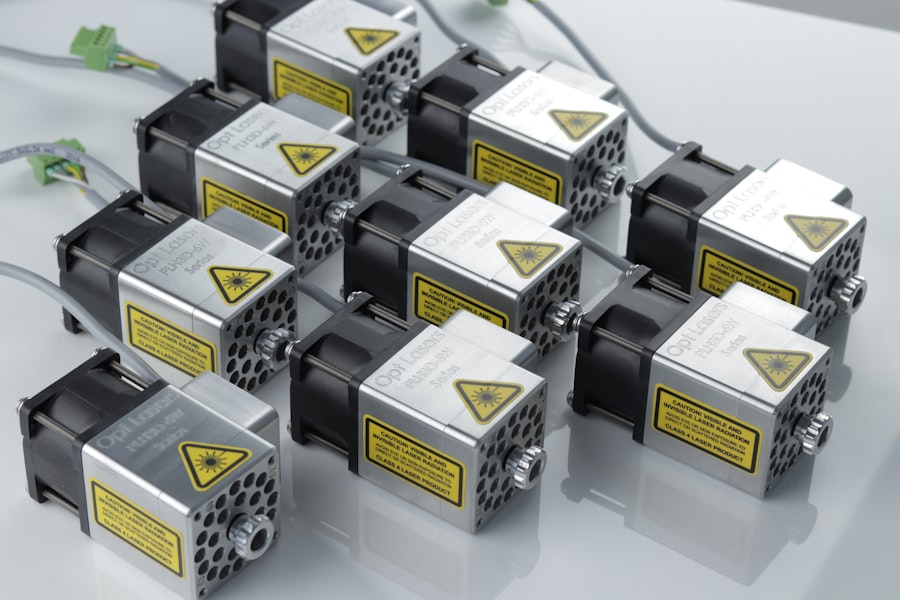Aftercare is a crucial component of any cosmetic procedure, and laser hair removal is no exception. You may be excited about the results, but understanding the importance of aftercare can significantly enhance your experience and outcomes. Aftercare refers to the steps you take following your treatment to ensure that your skin heals properly and that you achieve the best possible results.
Neglecting this aspect can lead to complications such as irritation, infection, or suboptimal hair removal results. When you undergo laser hair removal, your skin is subjected to intense light energy that targets hair follicles. This process can leave your skin sensitive and vulnerable for a short period.
By adhering to a proper aftercare regimen, you can minimize discomfort and promote healing. It’s essential to recognize that your skin needs time to recover, and taking care of it post-treatment can make all the difference in how you feel and how effective the treatment is in the long run.
Key Takeaways
- Aftercare is crucial for successful laser hair removal treatment
- Do’s include keeping the treated area clean and moisturized
- Don’ts include picking or scratching the treated area
- Proper cleaning and care involve gentle cleansing and avoiding harsh products
- Managing discomfort and redness can be done with cool compresses and aloe vera gel
The Do’s of Laser Hair Removal Aftercare
To ensure a smooth recovery after your laser hair removal session, there are several do’s you should follow. First and foremost, keeping the treated area clean is vital. You should gently cleanse the area with a mild soap and lukewarm water.
This helps remove any residual gel or debris while preventing irritation. Pat the area dry with a soft towel instead of rubbing it, as friction can exacerbate sensitivity. Another important do is to apply a soothing lotion or aloe vera gel to the treated area.
These products can help calm any redness or irritation that may occur after the procedure. Look for products that are fragrance-free and designed for sensitive skin to avoid any adverse reactions. Additionally, staying hydrated is essential; drinking plenty of water can help your skin recover more quickly and maintain its elasticity.
The Don’ts of Laser Hair Removal Aftercare

While there are many things you should do after laser hair removal, there are also several don’ts that you need to keep in mind. One of the most critical don’ts is to avoid sun exposure. Your skin will be particularly sensitive after treatment, and exposing it to UV rays can lead to sunburn or pigmentation changes.
If you must go outside, make sure to apply a broad-spectrum sunscreen with an SPF of at least 30 to protect your skin.
This includes exfoliants, retinoids, or any products containing alcohol or fragrances. These ingredients can irritate your sensitive skin and hinder the healing process. Instead, stick to gentle, hydrating products that will support your skin’s recovery without causing additional stress.
How to Properly Clean and Care for Treated Areas
| Steps | Details |
|---|---|
| 1 | Use a mild soap and water to clean the treated area |
| 2 | Avoid using harsh chemicals or abrasive cleaners |
| 3 | Gently pat the area dry with a clean towel |
| 4 | Avoid rubbing or scrubbing the treated area |
| 5 | Apply any recommended post-treatment products as directed |
Proper cleaning and care for treated areas are essential for optimal healing after laser hair removal. Start by washing the area gently with a mild cleanser and lukewarm water. Avoid using hot water, as it can increase sensitivity and irritation.
After cleansing, make sure to pat the area dry with a clean towel; avoid rubbing or scrubbing, as this can aggravate the skin. Once the area is clean and dry, consider applying a soothing ointment or gel recommended by your practitioner. Aloe vera is an excellent choice due to its natural anti-inflammatory properties.
If you notice any swelling or redness, applying a cold compress can also provide relief. Remember to keep the treated area moisturized; dry skin can lead to discomfort and prolong the healing process.
Managing Discomfort and Redness After Treatment
Experiencing some discomfort or redness after laser hair removal is entirely normal, but managing these symptoms effectively can enhance your comfort level significantly. If you find that the treated area feels tender or swollen, over-the-counter pain relievers like ibuprofen or acetaminophen can help alleviate discomfort. Always follow the recommended dosage instructions on the packaging.
In addition to medication, applying a cold compress can be beneficial for reducing redness and swelling. Simply wrap ice in a clean cloth or use a gel pack, and apply it gently to the affected area for short intervals. This method not only soothes the skin but also helps constrict blood vessels, which can reduce inflammation.
If redness persists beyond a few days or worsens, it’s advisable to consult your practitioner for further guidance.
Protecting Treated Skin from Sun Exposure

Why Sun Protection is Crucial
After laser hair removal, it’s essential to protect your treated skin from sun exposure. Your skin becomes more susceptible to damage from UV rays during this time, making it crucial to take precautions.
Practical Tips for Sun Protection
If you must be outdoors, wear protective clothing such as long sleeves and wide-brimmed hats to provide an extra layer of defense. Additionally, applying sunscreen is non-negotiable. Choose a broad-spectrum sunscreen with an SPF of 30 or higher and apply it generously to the treated areas before heading outside.
Reapplication and Prevention
Reapply sunscreen every two hours if you’re spending extended periods outdoors or if you’re sweating or swimming. This proactive approach will help prevent hyperpigmentation and ensure that your skin heals beautifully.
Avoiding Certain Activities and Products
After undergoing laser hair removal, it’s crucial to avoid specific activities and products that could interfere with your recovery process. For instance, refrain from engaging in strenuous exercise for at least 24 hours post-treatment. Sweating can irritate the treated area and increase the risk of infection.
Opt for light activities like walking instead until your skin has had time to heal. Additionally, be cautious about using certain skincare products during your recovery period. Avoid products containing retinoids, alpha hydroxy acids (AHAs), or beta hydroxy acids (BHAs), as these can irritate sensitive skin and lead to adverse reactions.
Instead, focus on using gentle moisturizers and soothing creams that will help support your skin’s healing process without causing further irritation.
Long-Term Maintenance and Follow-Up Care
Long-term maintenance is an essential aspect of ensuring that you achieve lasting results from your laser hair removal treatment.
It’s important to discuss a personalized maintenance plan with your practitioner based on your specific needs and hair growth patterns.
Regular follow-up appointments are also vital for monitoring your progress and addressing any concerns you may have about your treatment outcomes. Your practitioner can provide valuable insights into how often you should schedule maintenance sessions based on how your body responds over time. By staying committed to this long-term care plan, you can enjoy smooth skin without the hassle of frequent shaving or waxing for years to come.
In conclusion, understanding the importance of aftercare following laser hair removal cannot be overstated. By adhering to recommended practices—such as keeping the treated area clean, managing discomfort effectively, protecting against sun exposure, and avoiding certain activities—you set yourself up for success in achieving beautiful results. Remember that this journey doesn’t end with your last treatment; long-term maintenance and follow-up care are key components in ensuring that you enjoy smooth skin for years ahead.
If you’re looking for more information on laser hair removal aftercare, be sure to check out this article on 10 Common Mistakes to Avoid After Laser Hair Removal. This article provides valuable tips on what to do and what not to do to ensure the best results from your treatment. Remember, proper aftercare is essential for achieving smooth, hair-free skin.
FAQs
What is laser hair removal aftercare?
Laser hair removal aftercare refers to the steps and precautions that should be taken after undergoing a laser hair removal treatment to ensure proper healing and optimal results.
What are the do’s for laser hair removal aftercare?
Some of the do’s for laser hair removal aftercare include keeping the treated area clean and moisturized, avoiding sun exposure, wearing loose clothing, and following the specific aftercare instructions provided by the treatment provider.
What are the don’ts for laser hair removal aftercare?
Some of the don’ts for laser hair removal aftercare include avoiding hot showers, saunas, and steam rooms, refraining from picking or scratching the treated area, and avoiding the use of harsh skincare products or exfoliants on the treated area.
How long should I wait before exposing the treated area to the sun?
It is recommended to wait at least 2 weeks before exposing the treated area to the sun after laser hair removal treatment. Sun exposure can increase the risk of complications and should be avoided during the healing process.
Can I shave the treated area after laser hair removal?
Shaving the treated area is generally safe and can be done as needed after laser hair removal treatment. However, other hair removal methods such as waxing or plucking should be avoided as they can interfere with the effectiveness of the treatment.
Is it normal to experience redness and swelling after laser hair removal?
It is normal to experience some redness and swelling in the treated area after laser hair removal. This usually subsides within a few hours to a few days. If the redness and swelling persist or worsen, it is important to contact the treatment provider.
How long does it take for the skin to fully heal after laser hair removal?
The skin typically takes about 7-14 days to fully heal after laser hair removal treatment. During this time, it is important to follow the aftercare instructions provided by the treatment provider to ensure proper healing and minimize the risk of complications.
Can I use skincare products on the treated area after laser hair removal?
It is important to avoid using harsh skincare products or exfoliants on the treated area after laser hair removal. Gentle, non-irritating moisturizers can be used to keep the skin hydrated and promote healing.
What should I do if I experience any unusual symptoms after laser hair removal?
If you experience any unusual symptoms such as severe pain, blistering, or infection after laser hair removal, it is important to contact the treatment provider immediately. These symptoms may indicate a complication that requires medical attention.
How many sessions of laser hair removal are typically needed for optimal results?
The number of laser hair removal sessions needed for optimal results can vary depending on individual factors such as hair color, skin type, and the area being treated. On average, most people require 6-8 sessions spaced several weeks apart for best results.






